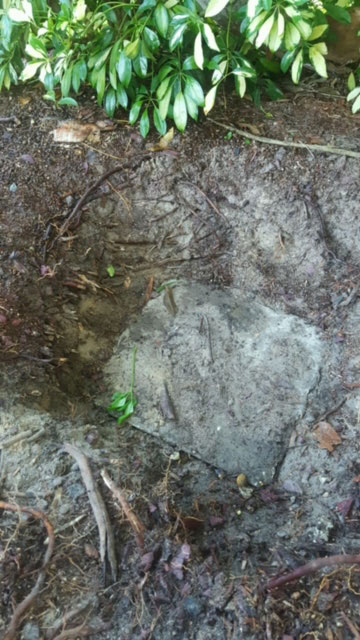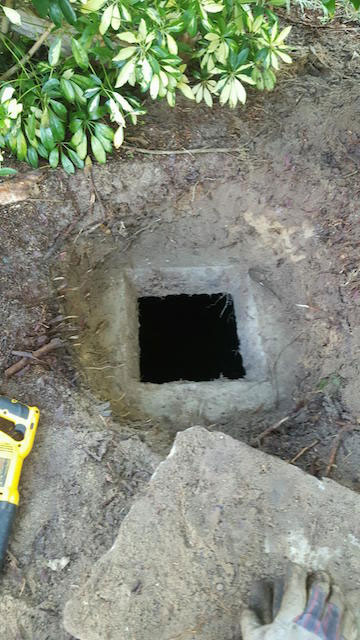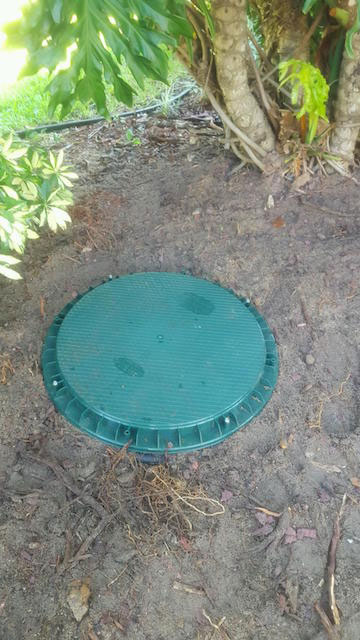Installation and Benefits of Septic Tank Risers and Covers
Are you tired of having to dig up the yard every time you need the septic tank serviced or pumped? We have a solution! The installation of septic tank risers and covers makes the process easier and faster for Clermont homeowners – and can even save you some money over time.
The following information and video will help you to better understand how these septic tank risers and covers are installed and the benefits of using.
What are Septic Tank Risers?
 The septic tank riser is a dense plastic that runs vertically up from the opening in the top of the septic tank providing technicians easy access to pump out the contents of the tank. While the riser may appear to be a very simple concept, it is often missing from the standard septic tank, especially if it is a particularly older design. The septic tank brings the tank’s access lid to the surface. No longer will a septic tank technician have to dig up the yard in order to gain access to your septic tank lid for repairs, waste removal, or inspections.
The septic tank riser is a dense plastic that runs vertically up from the opening in the top of the septic tank providing technicians easy access to pump out the contents of the tank. While the riser may appear to be a very simple concept, it is often missing from the standard septic tank, especially if it is a particularly older design. The septic tank brings the tank’s access lid to the surface. No longer will a septic tank technician have to dig up the yard in order to gain access to your septic tank lid for repairs, waste removal, or inspections.
Typically, the septic tank riser and cover are 12 to 24 inches in diameter. The height of the riser will depend on how far into the ground the septic tank was positioned. A septic tank lid will cover the opening of that riser and extends directly through the surface of your lawn. The septic tank risers and covers make accessing your tank easier for you, an inspector, or the septic waste removal team.
Installation of the Septic Tank Risers and Covers
To better understand the process for installing the septic tank riser and cover, we need to break down the process into three steps. Remember, once the riser is installed, you won’t have to go through this process again for the life of the tank. Here is the process utilized for installing the tank extension:
Step 1 – Choosing the Riser Material
Before having the septic tank riser installed, you have the opportunity to choose between different materials used in the construction of those risers. The three most popular choices are polyvinyl chloride (PVC), polyethylene, or concrete, and all three differ in durability, ease of installation, and cost. Concrete tends to be the least expensive, but it is also the most challenging to install, as labor costs are higher. Polyethylene risers are lighter and much easier to install, however they tend to leak gases more than the other options. While the PVC is a little more costly it is the lightest and easiest to install and unlikely to leak water or gasses over the life of your septic tank making it a top choice.
Step 2 – Where to Install Septic Risers
The septic tank riser makes access to the tanks lid more convenient. Before bringing the tank closer to the ground surface, you have to carefully consider if you want the cap on the riser visible or just slightly below the surface of the grass. Above-ground septic tank riser installation is mostly used in areas not visible or areas that do not interfere with lawn care. Below-ground septic tank riser installation will virtually hide the riser slightly below the surface. This method is more discreet, however you will have to remove some grass top of the riser each time you need access to the septic tank.
Step 3 – Determining Riser Height
A septic tank can be installed usually 3 feet below the surface, but the average is approximately 18 inches. Risers can be stacked on top of each other until they can reach right below the surface. Determine whether you want the cap above or below the surface so the proper measurements and materials can be utilized before the job of installing the riser has started. Once the tank riser is stalled and the end capped, the process is now complete.
Benefits of Using Septic Tank Risers
The benefits of having a professional Clermont FL septic company install your septic tank risers and covers are numerous. Speak with a representative of the installation team so they can expand on these benefits if you have any further questions or concerns not addressed here.
Septic Riser Cost: Remember, the cost to have the septic tank risers and covers installed is a one-time charge. The cost will pay for itself through the savings on subsequent inspections and maintenance. Septic tanks can be inspected once a year, and the pump-outs occur every three to five years, so the labor saved in digging up to the tank cover stay in your pocket for the rest of the life of the tank. Long-term savings are going to add up considerably. There’s no easier way to access your septic tank than through the riser, significantly reducing the cost of septic tank maintenance.
Easy Visual Inspection: Risers and covers also make it easy for homeowners to perform a quick visual inspection to determine if the tank is full or not. If you have a house full of people over the holidays and experience slow drainage it could be from a blockage in the pipes or from a full septic tank. A quick lift of the septic lid will let you see inside the tank to know if it’s full and determine whether you need to call a plumber or a septic pumping company like Advanced Septic Services!
Appearance: One of the advantages of having the risers professionally installed instead of using a DIY septic riser and lid kit is our team can cut the riser to the height that is flush with the surface of the lawn. When the lid is slightly below the surface of the lawn, a small patch of grass over the cover will completely hide the riser and cap instantly. When the riser cover is just below the ground, your lawn is able to be maintained as usual, and then accessing the riser will require minimal effort when it comes time maintain, pump or to inspect the septic tank.
Now you understand all the benefits and the process of installing septic tank risers and covers. Not only will installing the riser make accessing the septic tank easier for pumping, it assures future maintenance checks and inspections will go smoothly. No longer will professional septic technicians have to search to locate the septic tank by digging numerous holes in your lawn.

Locating Septic Tank Lid

Removing Concrete Lid

Installing Septic Tank Risers

Placing Septic Cover On Riser


